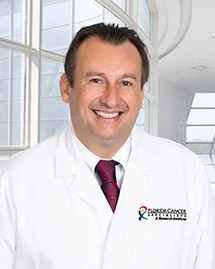Author(s): Emmanuel Bachy , MD, PhD1,2; Vincent Camus , MD3; Catherine Thieblemont , MD, PhD4; David Sibon , MD, PhD5; René-Olivier Casasnovas , MD6; Loïc Ysebaert , MD, PhD7; Gandhi Damaj, MD, PhD8; Stéphanie Guidez, MD9; Gian Matteo Pica, MD10; Won Seog Kim , MD, PhD11; Soon Thye Lim, MBBS12; Marc André, MD13; Alejandro Martín García-Sancho , MD, PhD14; Maria Jesus Penarrubia , MD, PhD15; Philipp B. Staber , MD, PhD16; Judith Trotman , MBChB17; Andreas Hüttmann , MD18; Vittorio Stefoni, MD, PhD19; Alessandro Re, MD20; Philippe Gaulard , MD21; Marie-Helene Delfau-Larue, MD, PhD22; Laurence de Leval, MD, PhD23; Michel Meignan , MD, PhD24; Ju Li, PhD25; Franck Morschhauser , MD, PhD26; and Richard Delarue, MD5,27;
PURPOSE
Romidepsin, a histone deacetylase inhibitor, has demonstrated activity in relapsed or refractory peripheral T-cell lymphoma (PTCL) as a single agent. Cyclophosphamide, doxorubicin, vincristine, and prednisone (CHOP) therapy is widely used as first-line treatment of PTCL; however, it has limited efficacy. Results from a phase Ib and II study showed the feasibility of combining romidepsin with CHOP (Ro-CHOP).
METHODS
This study is a randomized phase III study of Ro-CHOP versus CHOP in adult patients with previously untreated PTCL. All patients received CHOP in 3-week cycles for six cycles. Romidepsin, 12 mg/m2, was administered intravenously over a 4-hour period on days 1 and 8 of each 3-week cycle for six cycles. The primary end point was progression-free survival (PFS) according to International Working Group 1999 criteria.
RESULTS
Between January 2013 and December 2017, 421 patients were enrolled (Ro-CHOP, n = 211; CHOP, n = 210). The median PFS for Ro-CHOP versus CHOP was 12.0 months (95% CI, 9.0 to 25.8) versus 10.2 months (95% CI, 7.4 to 13.2) with a hazard ratio of 0.81 (P = .096). In the Ro-CHOP versus CHOP arms, the median overall survival was 51.8 versus 42.9 months and the objective response rate was 63% versus 60% with complete response plus unconfirmed complete response rates of 41% versus 37% (P > .1 in all comparisons), respectively. Grade 3 or 4 treatment-emergent adverse events occurring in ≥ 30% of patients in the Ro-CHOP arm included thrombocytopenia (50% v 10% in the Ro-CHOP v CHOP arms, respectively), neutropenia (49% v 33%), anemia (47% v 17%), and leukopenia (32% v 20%).
CONCLUSION
The addition of romidepsin to CHOP did not improve PFS, response rates, nor overall survival and increased the frequency for grade ≥ 3 treatment-emergent adverse events. Ro-CHOP does not represent a significant advance in the standard of care for patients with previously untreated PTCL.
Author Affiliations
1Hospices Civils de Lyon, Lyon, France
2Claude Bernard Lyon 1 University, Lyon, France
3Department of Hematology, Centre Henri Becquerel, Rouen, France
4APHP, Hôpital Saint-Louis, Service d’hémato-oncologie, DMU DHI, Université de Paris, Paris, France
5Service d’Hématologie adultes, Hopital Universitaire Necker Enfants Malades, AP-HP, Paris, France
6Department of Hematology, CHU Dijon-Bourgogne and INSERM 1231, Dijon, France
7IUCT Oncopole, Toulouse, France
8Hematology Institute, University Hospital, Normandy University, School of Medicine, Caen, France
9Service d’Hématologie, CHU de Poiters, Poiters, France
10Department of Hematology, Centre Hospitalier Métropole Savoie Chambéry, Chambéry, France
11Samsung Medical Center, Seoul, South Korea
12National Cancer Centre Singapore, Singapore
13Department of Hematology, CHU UCL Namur, Yvoir, Belgium
14Hospital Universitario de Salamanca, IBSAL, CIBERONC, Salamanca, Spain
15Hospital Clinico Universitario de Valladolid, Valladolid, Spain
16Division of Hematology, Department of Medicine I, Medical University of Vienna, Vienna, Austria
17Concord Repatriation General Hospital, University of Sydney, Concord, Australia
18Department of Hematology and Stem Cell Transplantation, West German Cancer Center Essen, University Hospital Essen, University of Duisburg-Essen, Essen, Germany
19Policlinico Sant’Orsola-Malpighi, Bologna, Italy
20Hematology Division, Spedali Civili di Brescia, Brescia, Italy
21Department of Pathology and Inserm U955, University Hospital Henri Mondor, Créteil, France
22Department of Immunobiology and Inserm U955, Université Hôpital Henri Mondor, Créteil, France
23Institute of Pathology, Lausanne University Hospital, Lausanne University, Lausanne, Switzerland
24LYSA Imaging, APHP, Hôpital Henri Mondor, Université Paris Est, Créteil, France
25Bristol Myers Squibb Company, Princeton, NJ
26Univ. Lille, CHU Lille, ULR 7365 – GRITA – Groupe de Recherche sur les Formes Injectables et les Technologies Associées, Lille, France
27Celgene, a Bristol Myers Squibb Company, Boudry, Switzerland
